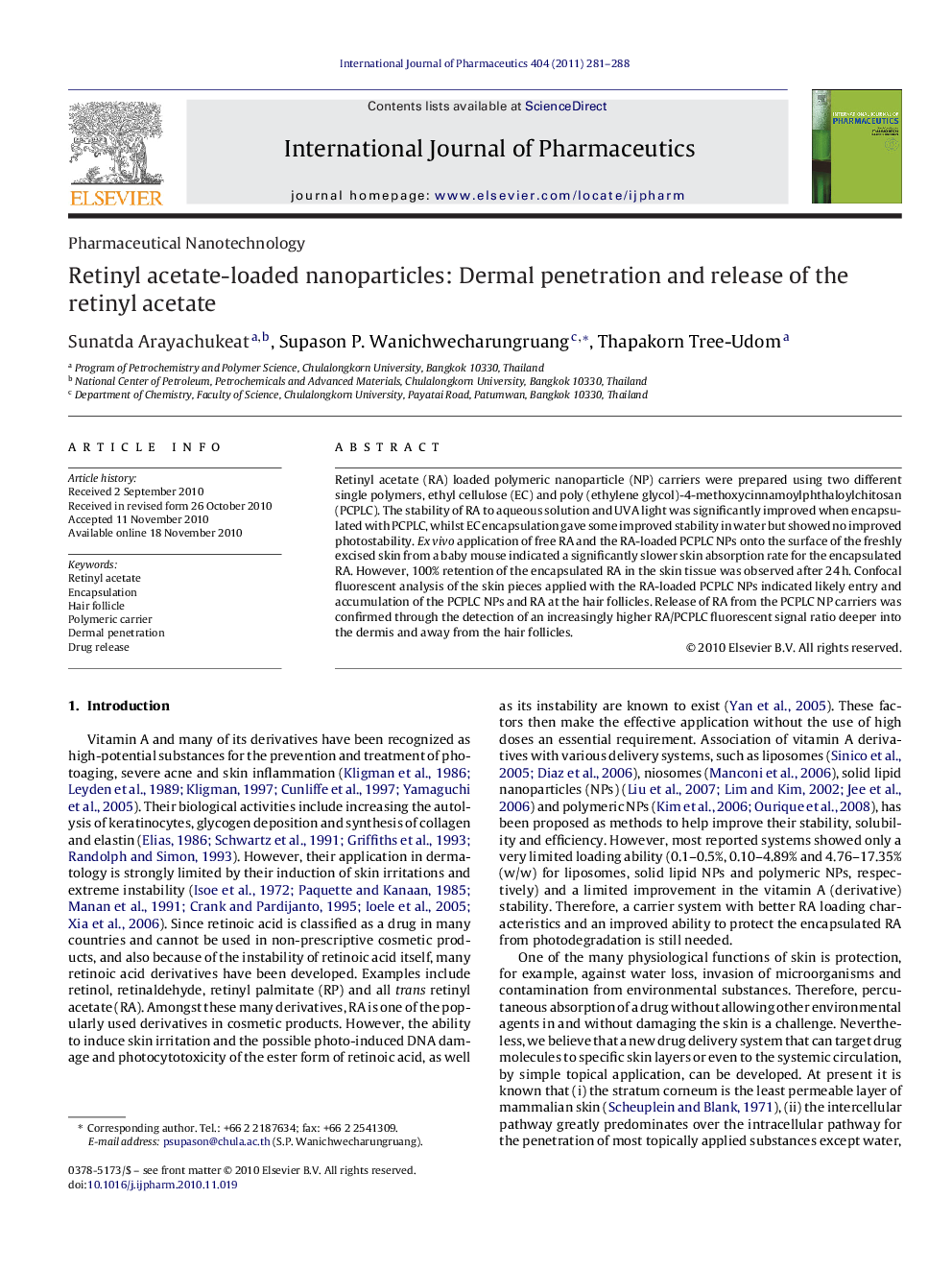| Article ID | Journal | Published Year | Pages | File Type |
|---|---|---|---|---|
| 5821300 | International Journal of Pharmaceutics | 2011 | 8 Pages |
Retinyl acetate (RA) loaded polymeric nanoparticle (NP) carriers were prepared using two different single polymers, ethyl cellulose (EC) and poly (ethylene glycol)-4-methoxycinnamoylphthaloylchitosan (PCPLC). The stability of RA to aqueous solution and UVA light was significantly improved when encapsulated with PCPLC, whilst EC encapsulation gave some improved stability in water but showed no improved photostability. Ex vivo application of free RA and the RA-loaded PCPLC NPs onto the surface of the freshly excised skin from a baby mouse indicated a significantly slower skin absorption rate for the encapsulated RA. However, 100% retention of the encapsulated RA in the skin tissue was observed after 24Â h. Confocal fluorescent analysis of the skin pieces applied with the RA-loaded PCPLC NPs indicated likely entry and accumulation of the PCPLC NPs and RA at the hair follicles. Release of RA from the PCPLC NP carriers was confirmed through the detection of an increasingly higher RA/PCPLC fluorescent signal ratio deeper into the dermis and away from the hair follicles.
Graphical abstractDownload high-res image (230KB)Download full-size image
